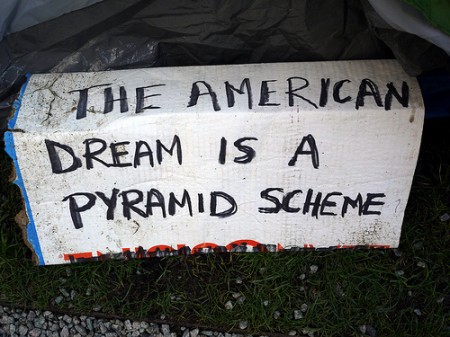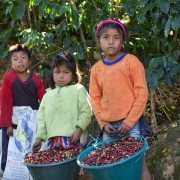Essay – Global Consciousness Pie Chart (By Mankh)

|
Getting your Trinity Audio player ready...
|
PIECE #1
Many human beings spend a lot of time online. Some look to self-educate as well as connect with others worldwide. The number of internet users from 2000 to 2012 increased over 2 billion. Yet those online are only about 34% of the global population.1 Thus, about 66% are not e-connected.
For those fortunate enough to be reading this, time offline could be considered as a way to connect with two-thirds of the two-legged consciousness of the planet. Come to think of it, the trees are not online, the birds are not online, the mountains and valleys are not online though many speak for them and you can find their images and sounds on screens large and small.
PIECE #2
According to Wikipedia, there are approximately 7.1 billion human beings living with the planet, and approximately 1.3 billion are Chinese and 1.2 billion are East Indian; combined they make for more than one-third of the population.
Not everyone reads words. The Chinese have a picture-language. One of the simplest yet most profound writings ever, the Tao Te Ching, emanates from China. Bear in mind, though, that “After the Communists took over China in 1949, [the companion] I Ching was denounced as a book of feudalism and superstition. It was banished from the market, and reading it was not allowed.”2
Recently, “China surpassed the United States as the world’s largest consumer of foreign oil, importing 6.3 million barrels per day compared to the United States’ 6.24 million.”3
Somewhere beneath China’s massive new concrete roadways and perhaps still on them flow those threads of timeless wisdom.
India is a land of a plethora of forms of yoga, meditation, raga and such like. Also,  according to Wikipedia, “Chennai is home to around 35-40% of India’s total automobile industry and for this reason it is known as the Detroit of Asia. It is on the way to becoming the world’s largest Auto hub by 2016 with a capacity of over 3 million cars annually.”4
according to Wikipedia, “Chennai is home to around 35-40% of India’s total automobile industry and for this reason it is known as the Detroit of Asia. It is on the way to becoming the world’s largest Auto hub by 2016 with a capacity of over 3 million cars annually.”4
Boomtime is nice but they might want to look into the not so crystal ball to see what’s happened in Detroit.
Whatever it is about the Chinese and Indian cultures that you know or don’t know, at least learning something helps to tune-in to a huge piece of the global consciousness.
PIECE #3
In his book Globalistan (2009), Pepe Escobar cites the stat that, “Since 2005 more than 3 billion people—half of the global population—are urban.”
Not only rubber tires, but the rhythm of human feet daily beat the concrete streets. Yet, Indigenous Peoples are often on the front lines literally protecting the water, etc. that affects everyone. Recent protests to stop fracking in New Brunswick, Canada are a prime hotspot; the Elsipogtog First Nation, a Mi’kmaq Nation, is not only taking action to protect their ways and people, they are protecting the well-being of Mother Earth.

Demonstrators rally against shale gas exploration in Halifax on Friday, Oct.18, 2013. The effort was in support of protesters including members of the Elsipogtog First Nation, who rallied against SWN Resources and its plans for shale gas development in New Brunswick.
According to Tiokasin Ghosthorse, host of First Voices Indigenous Radio, there are about 350 million Indigenous Peoples living on and caring for 70% of the pristine land that is left on the planet. Now, think about that and you will get some insight as to how important it is that corporate-governmental powers stop abusing Mother Earth and her children. Think about that some more and you will get some insight as to why the status quo would rather you think Indigenous Peoples are a fascinating relic of a bygone era. As will be shown in the following pieces, small numbers can have a large effect.
PIECE #4:
Actually getting a piece of pie and having it be nourishing is, unfortunately, not that simple for many people.
According to worldwatch.org, …
| “As many as 2.8 billion people on the planet struggle to survive on less than $2 a day, and more than one billion people lack reasonable access to safe drinking water . . . The U.N. reports that 825 million people are still undernourished; the average person in the industrial world took in 10 percent more calories daily in 1961 than the average person in the developing world consumes today.” |
Also …
| “The United States, with less than 5% of the global population, uses about a quarter of the world’s fossil fuel resources—burning up nearly 25 % of the coal, 26 % of the oil, and 27 % of the world’s natural gas.”5
“International research shows that United States’ defense funds make up between 40 and 45 percent of the world’s total military spending.”6 And about as much as the next 11 biggest spending countries combined, and more than four times that of China, number two on the list.”7 |
Food, energy, and the military intertwine, with the latter often being used to control the former and then some.
PIECE #5

The Occupy Movement highlighted the economic pie’s vast imbalances with such slogans as, “We are the 99% percent.” Yet according to Jason Bellini of the Wall Street Journal, there’s a kind of pyramid scheme within the 1%:
“Globally, 0.7 percent of the people control 41 percent of the world’s wealth.” And Americans are “42 percent of the 0.7 percent. . . . Bellini intriguingly asks,
| ‘Who holds the rest of the money?’ and then answers his question. ‘Below the point-seveners is a much larger group, the 7.7 percent of the global population that’s worth $100,000 to $999,000. They hold around 42 percent of global wealth. The remaining 91.6 percent of humanity splits around 17 percent of the wealth.’”8 |
Addressing the pathological sense of entitlement that many of the elite have (not all of the elite are nutzo), William Manson, in his article, ”The Politics of Sociopathic Narcissism,” writes:
| “Writing on “Personality Disorders” for The Harvard Guide to Psychiatry, eminent psychoanalyst John G. Gunderson noted that the narcissistic syndrome “overlaps considerably with the interpersonal style of anti-social personality—so much so that narcissistic individuals are sometimes considered ‘white-collar’ psychopaths . . . Extrapolating from Gunderson’s observation, I am therefore suggesting that ‘sociopathic narcissism’ is a characteristically political syndrome, disproportionately manifested in successful U.S. politicians—and most egregiously, in recent presidents.”9 |
Since politics is basically ruled by the corporate-banking state, it is not unfair to suggest that global wealth imbalances are essentially due to the sociopathic-narcissism of a small minority of distorted personas on the world stage.
We hear a lot about the 1% with their control of resources worldwide and the ensuing greed, yet there can be a positive and egalitarian effect with similar numbers. Ready for another slice?
PIECE #6
“Never doubt that a small group of thoughtful, committed, citizens can change the world. Indeed, it is the only thing that ever has.” ― Margaret Mead
“Gregg Braden, in The Isaiah Effect, claims that early sages and prophets suggested that one tenth of one percent of humanity could shift the consciousness of the world.”10 Transcendental Meditation calls a similar phenomenon, the Maharishi effect:
| “The name was given to the founder of Transcendental Meditation, Maharishi Mahesh Yogi. Maharishi predicted that if 1% of the population of a community practiced TM it would create a field of consciousness to improve the quality of life . . . With the introduction of a more advanced technique called the TM-Siddhi Yoga Program this had a more powerful effect whereby the square root of 1% of a population practicing these two techniques could ‘neutralize negative tendencies and promote positive trends throughout the whole population.’ . . . According to the ratio given by TM for how many people in a population can effect a change, with the world having now reached 7 billion people, one percent of the world’s population would be 70 million people, and the square root of 1% would be 8,367.”11 |
The proof is in the pudding but the idea that 8,367 human beings can have a powerfully positive effect on the world gives new meaning to such clichés as, “Every little bit helps.”
PIECE #7
While many are looking for inner and world peace, many are also looking for a piece of ass or thereabouts. Each has its place.
According to a Forbes article:
| “In 2010, out of the million most popular (most trafficked) websites in the world, 42,337 were sex-related sites. That’s about 4% of sites. From July 2009 to July 2010, about 13% of Web searches were for erotic content.”12 |
Yet the numbers are, uh, larger from another article13:
- 12 percent of all Web sites are porn
- 25 percent of all search engine requests are for porn
- 35 percent of all Internet downloads are pornographic
- Every second, 28,258 Internet users are viewing porn
- 89 percent of porn is created in the U.S.
- $2.84 billion in revenue was generated from U.S. porn sites in 2006
- 70 percent of the Internet porn traffic occurs during the nine to five workday
- 260 new porn sites go online daily
PIECE #8
People are apt to share the last piece so this section has no one theme.
A recent “Popular Resistance Newsletter – Finding Our Way To Empathy, Passion And Resistance” has a stat reflecting the changing tide from capitalism to something more genuinely egalitarian:
| “The Brookings Institution, a mainstay of Washington, DC think tanks, found that 42% of Americans do not think capitalism is working for the United States. Only 9% believe capitalism is working very well.”14 |
Even though a tremendous number of people may support something, because of the sociopathic tendencies of the corporate-state minority actual change can take a lot of work. The food industry is a case in point:
| “Knowing full well that 93 percent of the American public supports GMO labeling, and that if one state passes it, many others are likely to follow, entrenched agribusiness interests are pulling out all the stops to try to squelch yet another state labeling effort.”15 |
Seymour Hersh’s idea of how to fix journalism:
| “I’ll tell you the solution, get rid of 90% of the editors that now exist and start promoting editors that you can’t control. I saw it in the New York Times, I see people who get promoted are the ones on the desk who are more amenable to the publisher and what the senior editors want and the trouble makers don’t get promoted. Start promoting better people who look you in the eye and say ‘I don’t care what you say’.”16 |
COFFEE:
| “Over 2.25 billion cups of coffee are consumed in the world every day. Over 90% of coffee production takes place in developing countries, while consumption happens mainly in the industrialized economies.”17 |
So-called “developing countries” serving “industrialized economies” has a long history of  abusive practice toward fellow human beings and Mother Earth. Eduardo Galeano highlights this both strikingly and eloquently in his book Open Veins of Latin America: Five Centuries of the Pillage of a Continent.
abusive practice toward fellow human beings and Mother Earth. Eduardo Galeano highlights this both strikingly and eloquently in his book Open Veins of Latin America: Five Centuries of the Pillage of a Continent.
I’m no political statistician but many times have noticed how elections go and often it is 51% percent victories over 49% losses.
In the recent Venezuelan presidential election, Nicolás Maduro got 50.6% and Henrique Capriles Radonski, 49.1%
Oftentimes in the political arena, much hangs in the balance on a thin thread.
While such elections can have a major impact on the rest of world – in this case Venezuela being a focal point for much of the geo-political dis-engaging from the USEmpire’s hegemony (with its 1000? military bases) – in other parts of the world it is the political system itself that gets in the way. As Russell Brand recently wrote,
| “As far as I’m concerned there is nothing to vote for. I feel it is a far more potent political act to completely renounce the current paradigm than to participate in even the most trivial and tokenistic manner, by obediently X-ing a little box.”18 |
Considering the global grasping for resources, one of the most powerful ‘voting’ tools is the wallet. The entire corporate-commerce system is based on end-result sales; if those sales can be changed – whether through boycott, consumer pressuring of companies, or simply buying stuff somewhere else – that’s one way that the “ruthless efficiency” (to quote Monty Python) of the system can be undermined.
So the next time you get some coffee and a piece of pie, it might interest you to know where it comes from and how it was produced.
A TIP FOR THE READER:
Whether having to do with global population aka human beings, hunger, energy supplies, peacefulness, sexuality, elections, and so on, as William Carlos Williams’ little poem, “The Red Wheelbarrow,” reminds us:
| so much depends upon a red wheel glazed with rain beside the white |
Mankh (Walter E. Harris III) is an essayist and resident poet on Axis of Logic. In addition to his work as a writer, he is a small press publisher and Turtle Islander. His newest haiku chapbook is “so many people go hungry.” He also hosts an audio show “Between the Lines: listening to literature online.” You can contact him via his literary website.
READ MORE POETRY AND ESSAYS BY MANKH ON AXIS OF LOGIC
Notes
- “Internet World Stats”
- The Complete I Ching translated by Taoist Master Alfred Huang
- “The REAL Reason for Saudi Arabia’s Shift Away from U.S.”
- “Automotive industry in India”
- “The State of Consumption Today”
- “Jon Huntsman says the U.S. spends more…”
- “List of countries by military expenditures”
- “America’s Wealthy Are Even Wealthier and Have a New Name”
- “The Politics of Sociopathic Narcissism”
- “The Maharishi Effect”
- “The Effects of Meditation Upon Groups on the World”
- “How Much of the Internet is Actually for Porn”
- “Surprise, Surprise: Internet Porn Is Popular”
- “Finding Our Way To Empathy, Passion And Resistance”
- “Monsanto’s Very Bad Week: Three Big Blows for GMO Food”
- “Seymour Hersh on Obama, NSA And The ‘Pathetic’ American Media”
- “Economics of coffee”
- “Russell Brand on revolution: ‘We no longer have the luxury of tradition’”

 Print
Print